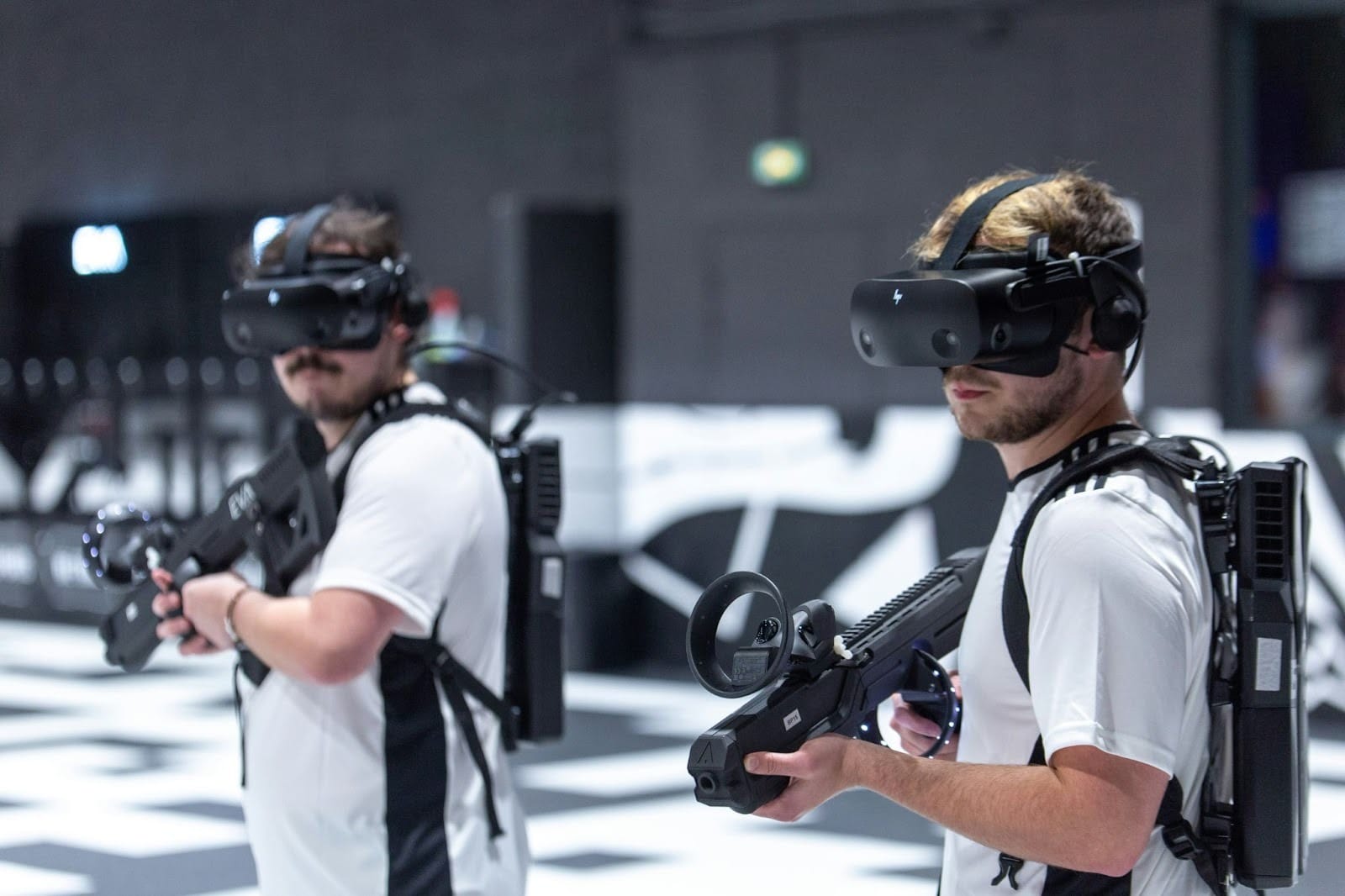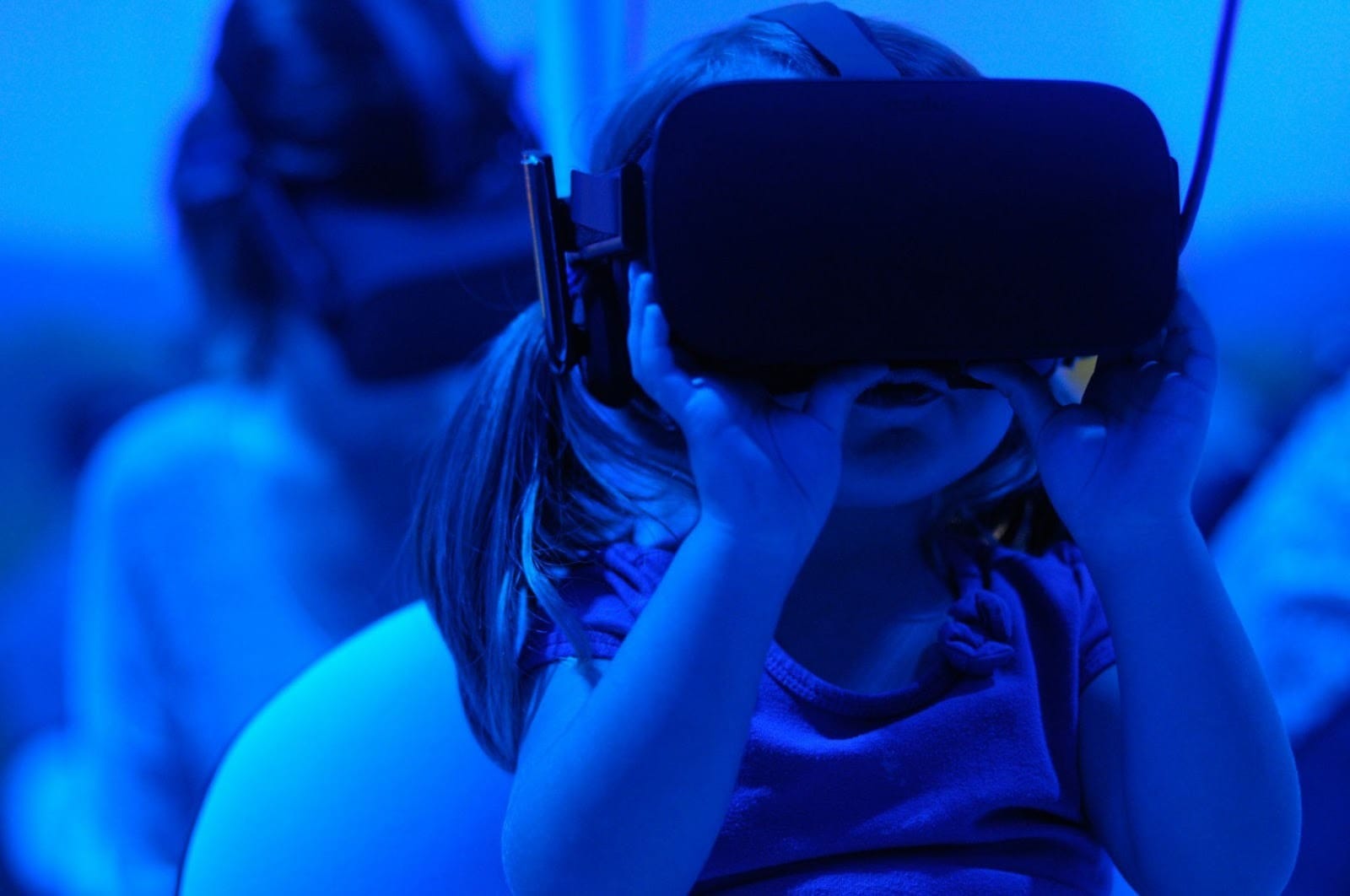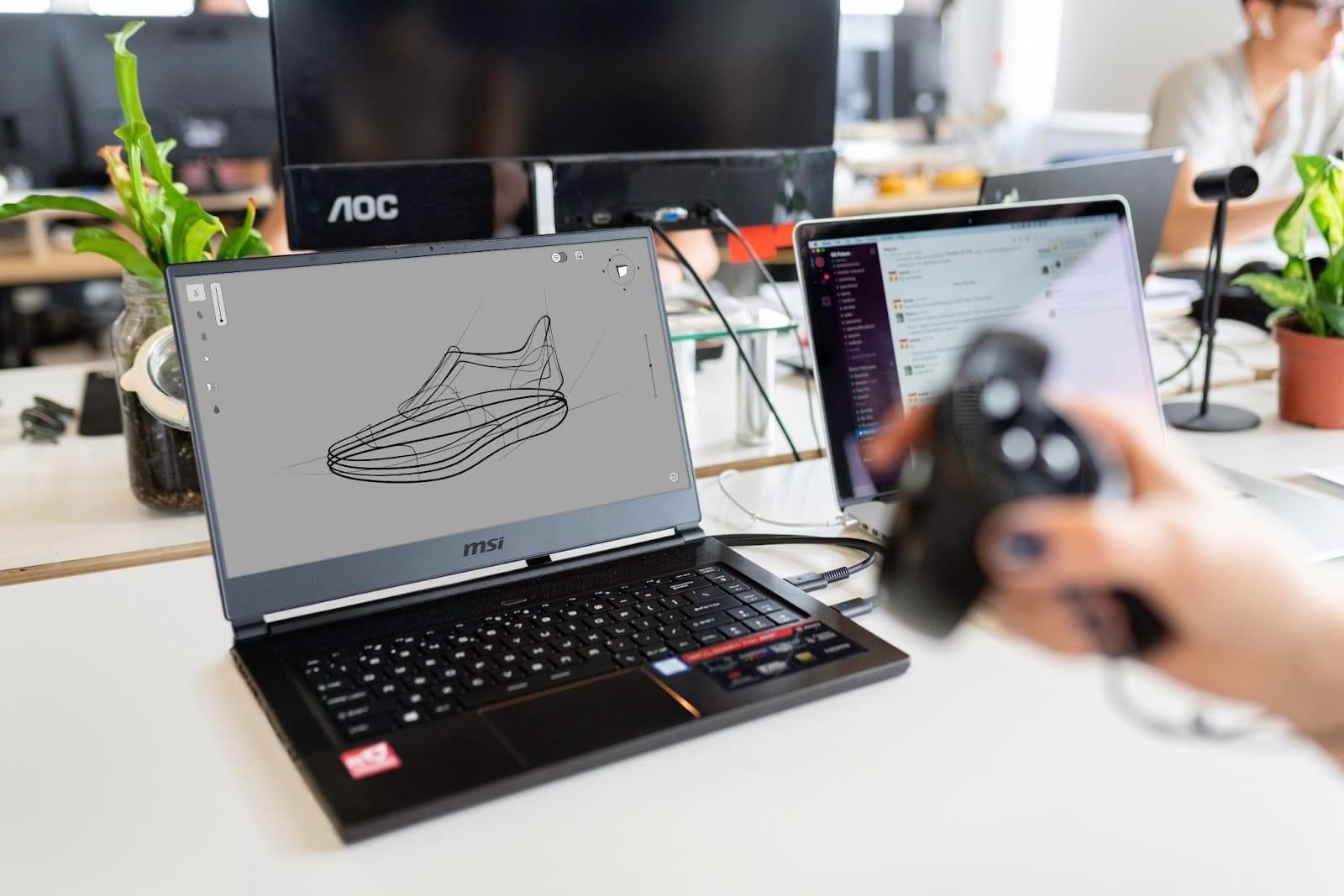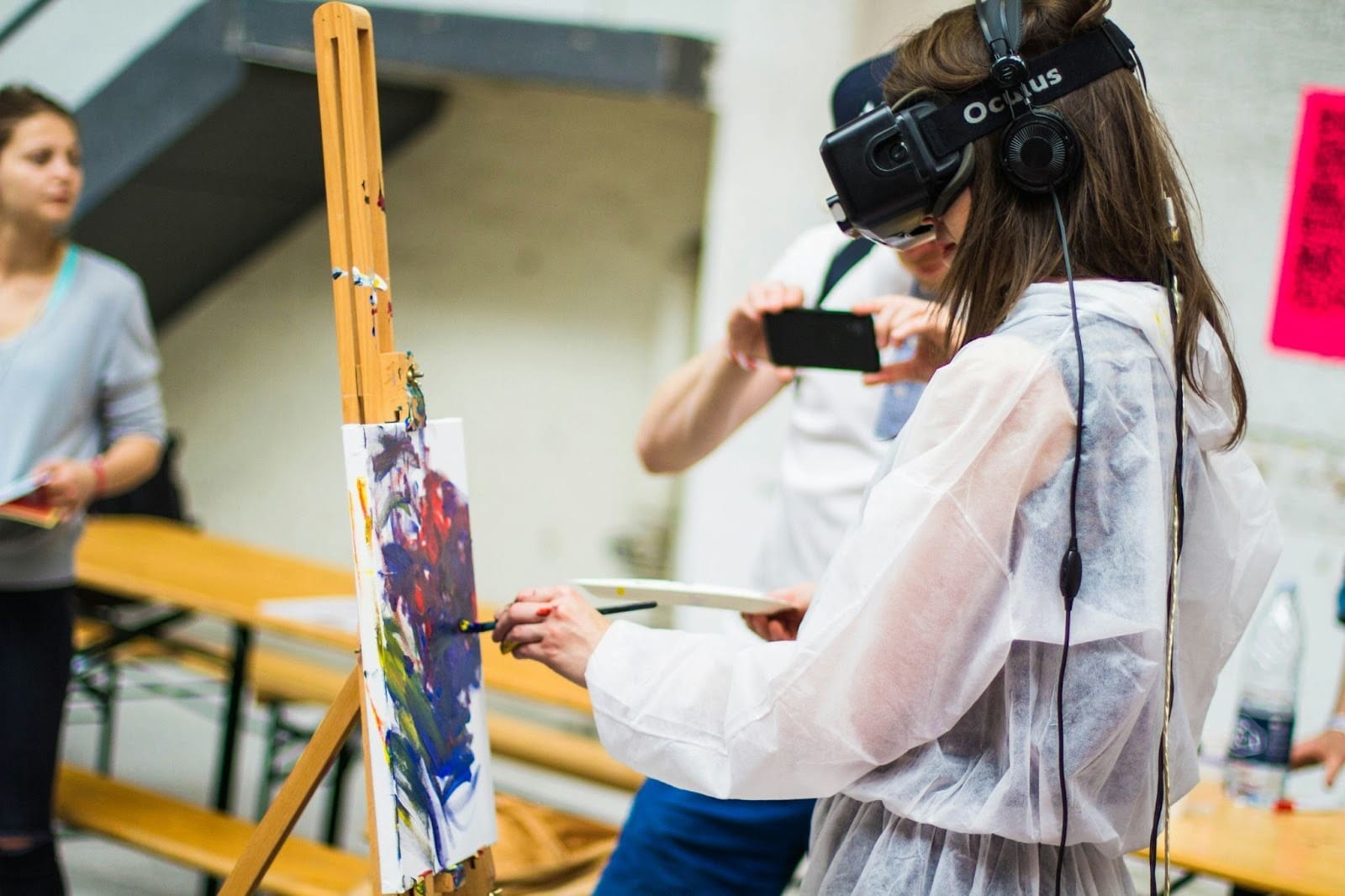Virtual Reality Trends in 2025: Exploring the Future of VR!
Once confined to gaming and sci-fi films, Virtual Reality (VR) has now stepped into boardrooms, classrooms, hospitals, marketing, and even home workouts. According to PwC's 2022 US Metaverse Survey, 51% of companies are already integrating VR into their business strategy or have built it into at least one dedicated line of business. This is a clear sign that immersive technology is now mainstream.
And the momentum isn't slowing down. The global VR market is projected to reach a staggering USD 435.36 billion by 2030, driven by breakthroughs in hardware, artificial intelligence, and connectivity. From sleek standalone headsets and lifelike 3D worlds to collaborative virtual offices and medical simulations, the latest VR trends are pushing boundaries and blending digital and physical realities like never before.
What VR Trends Were Dominant in 2024?

2024 was a defining year for Virtual Reality; it truly started reshaping how we work, play, market, and connect. Here's a look at the top trends that were dominant in 2024:
Workplace Integration
Businesses everywhere began integrating VR into their workflows. Companies like Walmart and Accenture expanded their VR-based employee training programs, while BMW and Airbus used immersive simulations for design and safety training. Virtual collaboration tools such as Horizon Workrooms and Spatial became staples for remote teams looking to connect beyond flat screens.
Mass Accessibility
Thanks to standalone, cost-effective, and easily portable devices like Meta Quest 3, Pico 4, and HTC Vive XR Elite, VR headsets are more accessible than ever before. VR fitness apps like Supernatural, Vrit, and FitXR turned workouts into immersive adventures, while Floreo uses VR to help individuals with autism develop social skills by simulating real-world scenarios.
Hardware Evolution
The advancement in VR hardware was impossible to ignore. Headsets became lighter, visuals sharper, and motion tracking smoother. The Apple Vision Pro and Meta Quest 3 set new benchmarks for mixed-reality performance, blending physical and digital worlds seamlessly. Haptic gloves, eye-tracking, and full-body tracking systems also became more common, adding new layers of realism.
Empowering VR Creators
Development platforms like Unity, Unreal Engine, and NVIDIA Omniverse simplified VR content creation and empowered independent developers, educators, and even small businesses to build high-quality immersive experiences with minimal coding. This accessibility fueled a wave of experimental VR games, simulations, and training tools.
Purpose-Driven VR Solutions
Various industries and sectors have adopted VR to provide purpose-driven VR solutions. Osso VR revolutionized surgical training, ENGAGE XR hosted virtual classrooms and corporate summits, and museums launched immersive tours where users could "walk through" history. From therapy apps to real estate walkthroughs, VR became a go-to tool for engagement, learning, and Virtual Reality storytelling.
Major Virtual Reality Trends Shaping 2025

Virtual Reality is getting smarter, more seamless, and highly creative thanks to major breakthroughs in AI, hardware, and design. Here are the top trends setting the stage for the next generation of immersive experiences:
Generative AI Integration
AI has become the creative engine behind VR. Generative tools are now helping designers build entire virtual worlds, characters, and environments in minutes. Imagine an AI that can render a cityscape, adjust lighting, or even write dialogue on the fly. Platforms like NVIDIA Omniverse and Runway ML are leading this shift, making VR creation faster, cheaper, and more personalized than ever.
Merging Physical and Virtual Worlds
The line between the physical and virtual worlds is officially blurring. Devices like the Apple Vision Pro and Meta Quest 3 let users see their real surroundings with digital overlays. They are turning living rooms into 3D playgrounds or offices into creative collaboration zones. This physical and digital mix is making VR practical for everyday use, from design visualization to remote teamwork.
Immersive Storytelling and Marketing
Filmmakers, educators, marketers, and brands are embracing VR to create 360-degree narratives that put users inside the story. Whether it's exploring deep space, reliving historical events, or joining an interactive concert, immersive storytelling is turning audiences into active participants.
A great example of augmented reality campaigns and immersive storytelling is Pepsi Max's AR Bus Shelter Campaign in London. This creative use of augmented reality campaigns generated huge social media engagement and showcased how immersive, location-based marketing can capture public attention and drive viral brand awareness.
App-Less Immersive Experiences
You no longer need bulky downloads or expensive hardware to explore virtual worlds. WebVR and WebXR technologies now allow users to step into 3D spaces directly from a browser on almost any device. Platforms like Mozilla Hubs and 8th Wall are championing this "app-less" revolution, making immersive content more accessible, shareable, and scalable than ever before.
The Metaverse: Is It Still the Big Story in 2025?
In 2025, the metaverse is quietly evolving into something far more practical and interconnected. Instead of one massive virtual world, we're seeing the rise of specialized micro-metaverses built for work, education, entertainment, and commerce.
Platforms like Horizon Worlds, Roblox, and Decentraland are still active, but now they're being joined by enterprise-focused ecosystems such as NVIDIA's Omniverse and Siemens' Industrial Metaverse, where engineers, designers, and developers collaborate in real time across continents. Even fashion and retail brands like Nike, Gucci, and IKEA continue to build immersive virtual showrooms and branded experiences that merge storytelling with shopping.
How Are Businesses Using Virtual Reality in 2025?

VR has officially gone from experimental tech to an everyday business tool. Companies across industries are discovering that immersive technology can boost productivity, engagement, and efficiency.
Training & Simulation: Corporations like Walmart, Shell, and Boeing use VR to train employees in lifelike scenarios. This can help improve safety, retention, and confidence without real-world risks.
Design & Prototyping: Automakers like Ford and BMW rely on VR to visualize and test vehicle designs before building physical models, saving millions in R&D.
Healthcare & Therapy: Hospitals are using tools like Osso VR and AppliedVR for surgical training, pain management, and mental health therapy.
Real Estate & Architecture: Realtors and architects use immersive walkthroughs to help clients experience properties and designs before construction begins.
Remote Collaboration: Platforms such as Spatial, Horizon Workrooms, and Arthur are redefining meetings and are replacing video calls with interactive 3D collaboration.
Marketing & Advertising: Companies like Coca-Cola, Royal Stag, Burger King, and KFC have used VR campaigns to create emotional, shareable experiences. These immersive moments let audiences feel part of the brand story, boosting engagement, brand recall, and social buzz.
How to Capitalize on VR Trends Now?

With VR adoption skyrocketing, this is the moment for brands, creators, and marketers to step into immersive storytelling. Here's how to make the most of today's VR momentum:
Start with Immersive and Mixed Reality Marketing
Consumers no longer want to watch stories; they want to experience them. Use immersive and mixed reality advertising and augmented reality campaigns to engage audiences through virtual try-ons, 3D product demos, or location-based activations. The key is to blend physical and digital touchpoints seamlessly to create moments that feel magical and meaningful.
Best Practices: Creative, Data, and Experience Design
Great VR marketing lies at the intersection of storytelling and usability.
Creative: Keep visuals clean, intuitive, and emotionally engaging. Design around how users move and explore, not just what they see.
Data: Collect insights on engagement, dwell time, and interaction paths to refine campaigns in real time.
Experience Design: Prioritize comfort, use smooth transitions, guided navigation, and clear feedback cues to help users stay immersed without fatigue.
Analytics and Proof-of-Performance Essentials
In immersive marketing, data is your compass. Measure not just views, but depth of engagement. Find out how long users interact with your ads, what they focus on, and what actions they take afterward. Use the data to improve growth and ROI, guide creative decisions, and optimize future campaigns.
How Flam Simplifies Immersive Marketing
Flam is helping brands overcome the biggest challenges in immersive marketing. A great example of Flam's innovative approach to marketing is exemplified by its recent collaboration with KFC on the "KFC Gold" campaign. This initiative transformed a standard print advertisement into an engaging 3D experience through a simple QR code scan, leveraging Flam's Mixed Reality (MR) platform.
Lower Friction: Instant access via QR codes removes barriers to entry.
Dynamic Updates: Campaigns can be refreshed in real time to stay relevant.
Performance Measurement: Built-in analytics track engagement and ROI.
Scalable Storytelling: Experiences can reach audiences across multiple devices and locations.
Conclusion
Virtual Reality trends in 2025 are reshaping how brands, creators, and marketers engage audiences. From immersive brand experiences and VR storytelling to mixed reality advertising and augmented reality campaigns, the focus is on creating interactive, memorable moments that blend digital and physical worlds. Innovations like AI in VR/AR, WebAR, and app-less VR experiences make these technologies more accessible, measurable, and scalable.